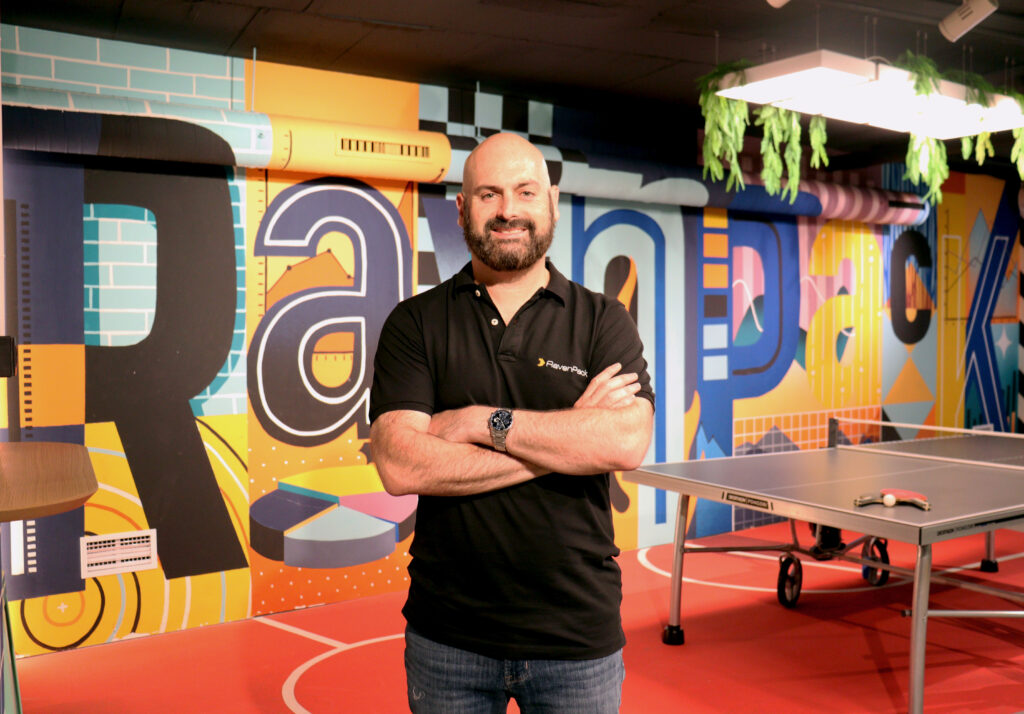Artificial Intelligence
Capital Efficient Strategy for Generative AI Startups: RavenPack CEO Armando Gonzalez (Part 3)
Sramana Mitra: Let’s go to your story. How did you build the company?
Armando Gonzalez: In the early days, we were mostly doing research and development and trying to figure out how some of our ideas could apply to different problems.
Sramana Mitra: When you got this client who wanted to use your trading technology, did you start zeroing in on that particular use case as the company positioning?
>>>Capital Efficient Strategy for Generative AI Startups: RavenPack CEO Armando Gonzalez (Part 2)
Sramana Mitra: The use case was investing and trading in stocks?
Armando Gonzalez: Yes, it didn’t start that way. It started as a very generic AI platform that could do all sorts of things including trading. We thought it could be used for healthcare diagnostics. We were looking at it from a cybersecurity perspective as well. We also tried building a prototype of open-source intelligence system that can be used by governments or global organizations.
>>>Capital Efficient Strategy for Generative AI Startups: RavenPack CEO Armando Gonzalez (Part 1)

Armando has built an AI company over 20 years, deeply focusing on Finance and Trading.
He discusses his journey, and also reflects on how generative AI startups can be built in a capital-efficient manner. Great conversation!
Sramana Mitra: Let’s start at the very beginning of your story. Where are you from? Where were you born and raised? What kind of background?
>>>Building an AI-Powered Pharmaceutical Services Business: VIDA CEO Susan Wood (Part 6)
Sramana Mitra: Data is clearly going to change the pharmaceutical industry.
Susan Wood: Similarly to find sites. Here are 50 sites that do high-quality imaging work. We went into this by getting imaging biomarkers. That’s an important thing, but more importantly, there are so many disconnects and inefficiencies in running these trials that our data can help in other ways.
>>>Building an AI-Powered Pharmaceutical Services Business: VIDA CEO Susan Wood (Part 5)
Sramana Mitra: What is the average deal size?
Susan Wood: In phase three, it’s in the order of $3 million to $5 million. I want to mention something else. When patients couldn’t go to a centralized site to get evaluated during COVID, they were shut out. The big push in the industry is what’s called decentralization of clinical trials. The trial comes to you.
I could be a nurse practitioner and you could be a subject. I’d say, “Take the drug now and we’ll take your blood pressure.” We can’t do that with imaging. Someday, I think we will. I can’t put a CT scan on your front yard easily. What we do is decentralize it. They would use decentralized imaging centers.
>>>Building an AI-Powered Pharmaceutical Services Business: VIDA CEO Susan Wood (Part 4)
Susan Wood: There are people out there who are walking around with a prevalence of lung disease that they’re not even aware of. You can have low-level or medium-level lung disease and not feel that much difference in your day-to-day life. When you have a pandemic and you have this acute impact on your respiratory system that has somewhat reduced the lung function anyway, those people would have poorer outcomes.
Sramana Mitra: On the consumer level, you had a lot more awareness?
>>>Building an AI-Powered Pharmaceutical Services Business: VIDA CEO Susan Wood (Part 3)
Sramana Mitra: Did you succeed in raising venture capital?
Susan Wood: Within the state, yes. The last round was a couple of years ago. That was with First Analysis out of Chicago. I’ve got some Silicon Valley money, but mostly from Midwest.
Sramana Mitra: It’s a common storyline where you get the early-stage funding from the state through small VCs, and then the bigger funding from Chicago. This is a common Midwest story.
>>>New Generative AI Startup Course and Udemy Coupons for May

As a part of our aim to democratize entrepreneurship education at scale globally, we have packaged our proven 1Mby1M methodology for building technology startups into short courses on Udemy.
In addition to offering you up to 85% off the following Udemy courses this month, we are introducing our new Generative AI course, Generative AI Startup Strategy Case Studies. Through this course, we will continue to add our most informative and inspirational case studies of startups and entrepreneurs who have successfully navigated the Generative AI space.
These coupons will expire on May 31, 2023, so enroll today!
Bootstrapping:
Bootstrap First, Raise Money Later with Sramana Mitra: TRY1MBY1MMAY2023BTS
